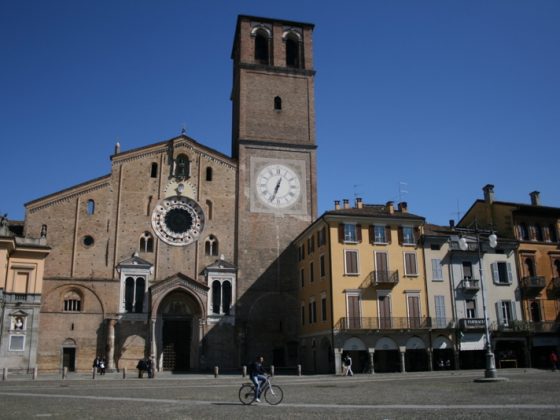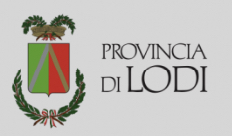01. The Cathedral of Lodi
01. The Cathedral of Lodi
- Telephone: 0371 420726
- Address: Piazza della Vittoria Lodi
The Lodi Cathedral was built together with the city. After the destruction of Laus Pompeia (Lodi Vecchio) by the Milanese in 1158, a new Lodi was built in the same year by will of the people and Frederick I of Swabia, alias Barbarossa.
Among the largest churches of Lombardy, its style is Romanic. Its construction began in 1160 and finished in the XVI century; it was completely refurbished between 1958 and 1965 by the architect Degani. It is worth mentioning the brickwork façade, (asymmetrical due to the bell-tower), the XII century porch with column-bearing lions, the majestic portal with the sculptures portraying “Adam and Eve” and the two Renaissance windows. Above the rose window there is an aedicule housing the statue of the saint patron, Saint Bassiano. It is a bronze copy of the original version made of copper and embossed gold which may be found on the third pillar to the left inside the church.
The inside features three naves arranged in an alternate display: the one-span central nave alternates two two-span side naves. The side chapels house very important frescoes, some of which are devoted to the Virgin. 11 wooden intarsia, done in 1523 by Giovanni da Verona, are also remarkable pieces; currently they are located in the choir and portray still lives and ideal cities set in the framework of Brunelleschi-like architecture. At the entrance to the crypt there is a bas-relief portraying “the last supper”, probably from Lodi Vecchio and possibly older than the church itself. The crypt guards the relics of San Bassiano.

The Lodi Cathedral was built together with the city. After the destruction of Laus Pompeia (Lodi Vecchio) by the Milanese in 1158, a new Lodi was built in the same year by will of the people and Frederick I of Swabia, alias Barbarossa.
Among the largest churches of Lombardy, its style is Romanic. Its construction began in 1160 and finished in the XVI century; it was completely refurbished between 1958 and 1965 by the architect Degani. It is worth mentioning the brickwork façade, (asymmetrical due to the bell-tower), the XII century porch with column-bearing lions, the majestic portal with the sculptures portraying “Adam and Eve” and the two Renaissance windows. Above the rose window there is an aedicule housing the statue of the saint patron, Saint Bassiano. It is a bronze copy of the original version made of copper and embossed gold which may be found on the third pillar to the left inside the church.
The inside features three naves arranged in an alternate display: the one-span central nave alternates two two-span side naves. The side chapels house very important frescoes, some of which are devoted to the Virgin. 11 wooden intarsia, done in 1523 by Giovanni da Verona, are also remarkable pieces; currently they are located in the choir and portray still lives and ideal cities set in the framework of Brunelleschi-like architecture. At the entrance to the crypt there is a bas-relief portraying “the last supper”, probably from Lodi Vecchio and possibly older than the church itself. The crypt guards the relics of San Bassiano.


